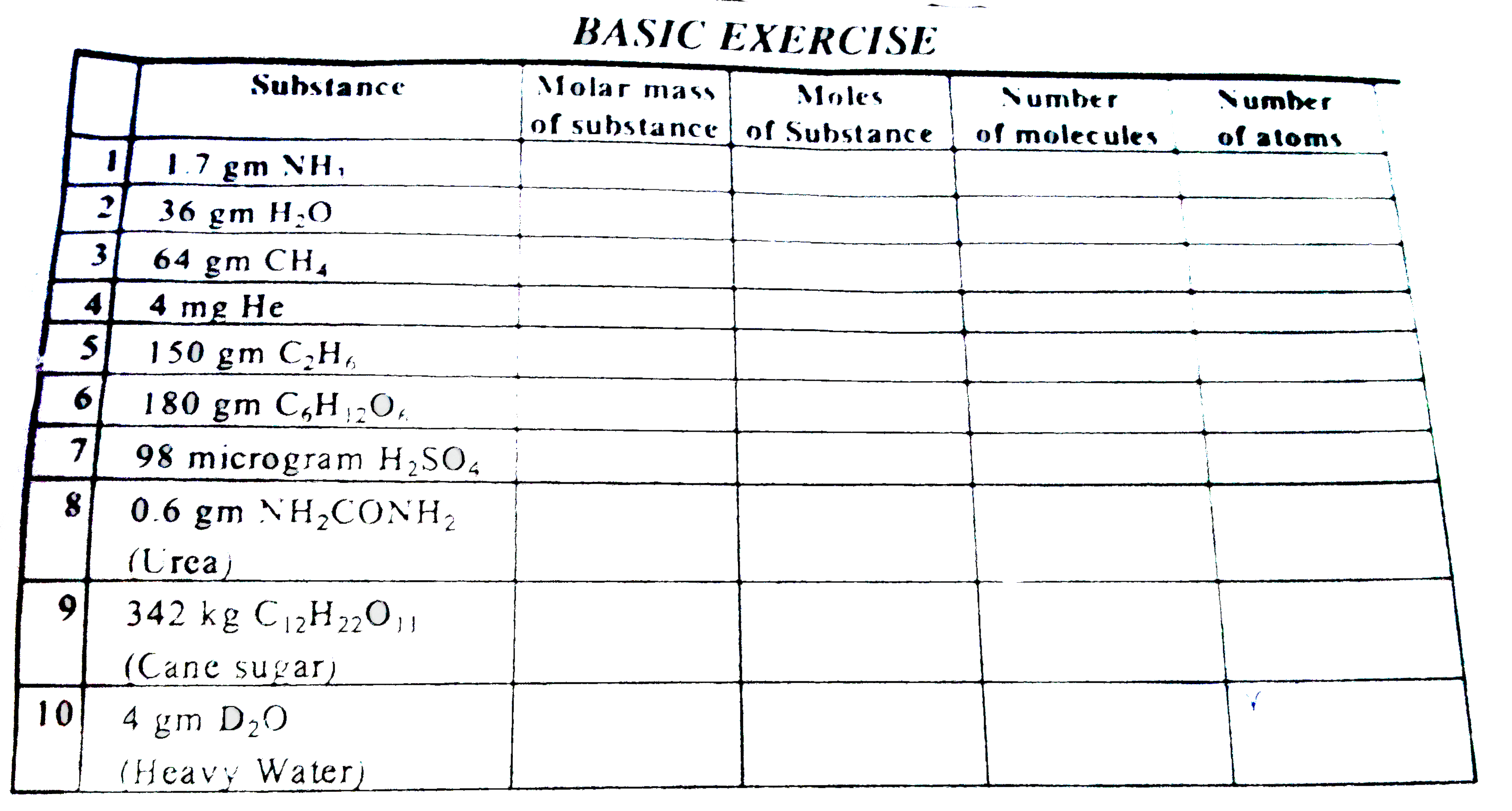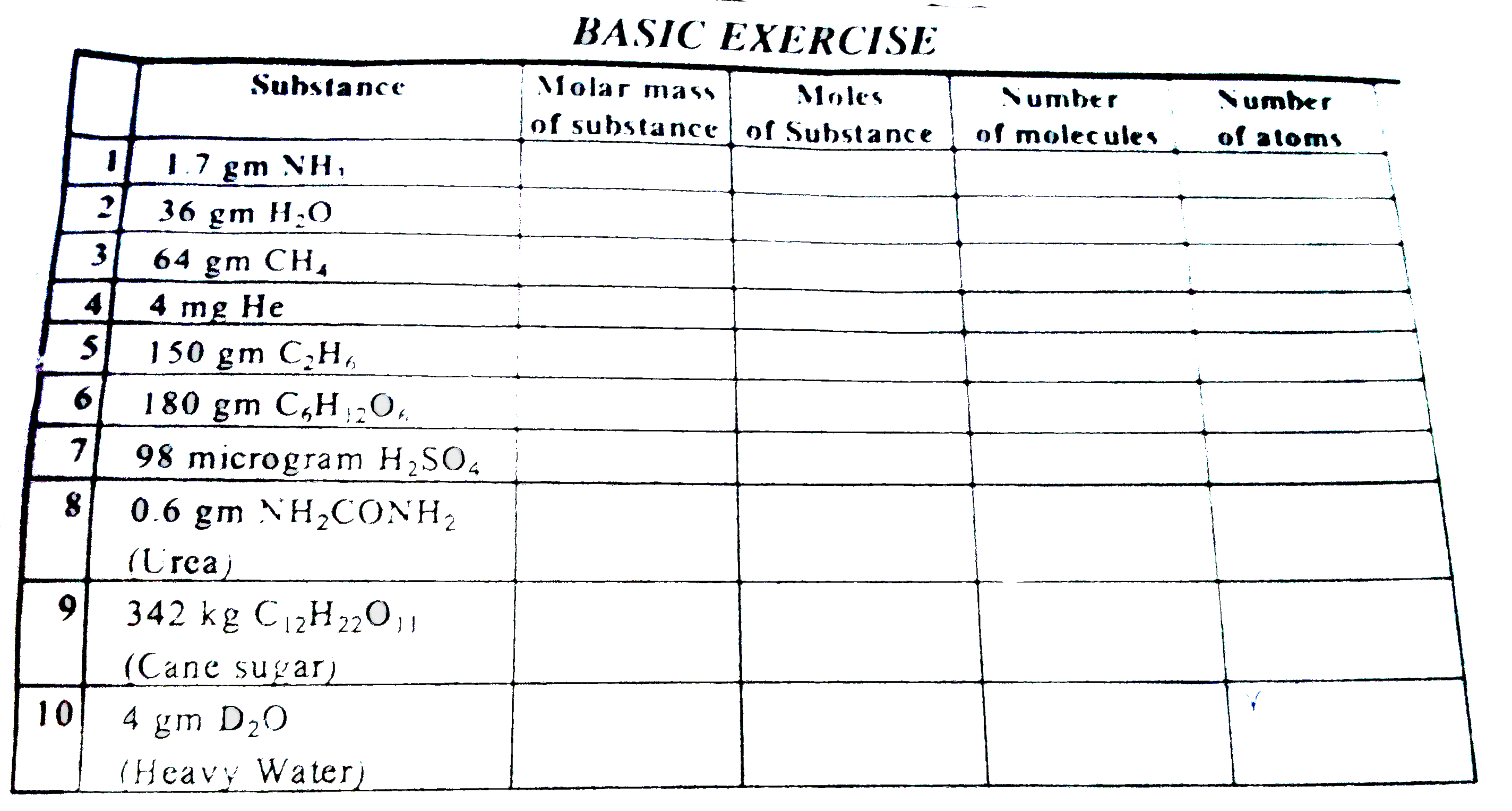2NH3→N2+3H2
If at the reaction, 18 mole of H2 is produced then find moles of
NH3 initially taken
The correct Answer is:(##ALNNCCHMMCE01021_A01##)
12
To solve the problem, we will use stoichiometry based on the balanced chemical equation provided:
Step 1: Write down the balanced chemical equation.
The balanced equation is:
2NH3→N2+3H2
Step 2: Identify the mole ratio from the balanced equation.
From the equation, we can see that:
- 2 moles of NH₃ produce 3 moles of H₂.
Step 3: Set up the relationship between NH₃ and H₂.
From the mole ratio, we can express the amount of NH₃ needed to produce a certain amount of H₂:
- For every 3 moles of H₂ produced, 2 moles of NH₃ are consumed.
Step 4: Determine how many moles of NH₃ are needed for 18 moles of H₂.
We know that 18 moles of H₂ are produced. We can set up a proportion based on the mole ratio:
If 3 moles of H2 require 2 moles of NH3,
Then 18 moles of H2 require x moles of NH3.
Using the ratio:
2 moles of NH33 moles of H2=x moles of NH318 moles of H2
Step 5: Cross-multiply and solve for x.
Cross-multiplying gives us:
2×18=3×x
36=3x
Now, divide both sides by 3:
x=363=12
Step 6: Conclusion.
Thus, the number of moles of NH₃ initially taken is 12 moles.
---
The balanced equation is:
2NH3→N2+3H2
From the equation, we can see that:
- 2 moles of NH₃ produce 3 moles of H₂.
From the mole ratio, we can express the amount of NH₃ needed to produce a certain amount of H₂:
- For every 3 moles of H₂ produced, 2 moles of NH₃ are consumed.
We know that 18 moles of H₂ are produced. We can set up a proportion based on the mole ratio:
If 3 moles of H2 require 2 moles of NH3,
Then 18 moles of H2 require x moles of NH3.
Using the ratio:
2 moles of NH33 moles of H2=x moles of NH318 moles of H2
Cross-multiplying gives us:
2×18=3×x
36=3x
Now, divide both sides by 3:
x=363=12
Thus, the number of moles of NH₃ initially taken is 12 moles.
Topper's Solved these Questions
- MOLE CONCEPTBOOK - ALLENCHAPTER - MOLE CONCEPTEXERCISE - S-I (Problems Related with Different Types of Atomic Masses & Basic Concept of Mole)
52 Videos
- MOLE CONCEPTBOOK - ALLENCHAPTER - MOLE CONCEPTEXERCISE - S-II
18 Videos
- MOLE CONCEPTBOOK - ALLENCHAPTER - MOLE CONCEPTEXERCISE - Some Solved Examples
9 Videos
- METALLURGYBOOK - ALLENCHAPTER - METALLURGYEXERCISE - EXERCISE-05 [B]
26 Videos
- p-Block Element BOOK - ALLENCHAPTER - p-Block Element EXERCISE - All Questions
20 Videos
Similar Questions
NH2COONH4Δ−−→2NH3+CO2
If 6 moles of NH3 is produced then find moles of NH2COONH4 intially taken.
View Solution
2A+3B→4C+D ⏐↓ (excess)3C→2E
If in the above reaction 6 moles of E are produced , find moles of 'A' initially taken.
View Solution2NH3→N2+3H2
Find moles of H2 produced from 4 moles of NH3
View SolutionN2+3H2→2NH3 In this reaction, equivalent weight of N2 is :
View SolutionN2+3H2→NH3
View SolutionN2+3H2→NH3
View Solution
A→2B+C
3B→2D
Find moles of D produced if initially 3 moles of A are taken.
View SolutionFor a reversible gaseous reaction N2+3H2⇔2NH3 at equilibrium , if some moles of H2 are replaced by same number of moles of T2 (T is tritium , isotope of H and assume isotopes do not have different chemical properties ) without affecting other parameters , then:
View SolutionTwo moles of NH3 when put into a proviously evacuated vessel (one litre) pertially dissociate into N2 and H2. If at equilibrium one mole of NH3 is present, the equilibrium constant is
View SolutionN2+3H2→2NH3. 1 mol N2 and 4 mol H2 are taken in 15L flask at 27∘C After complete conversion of N2 into NH3,5L of H2O is added. pressure set up in the flask is:
View Solution
